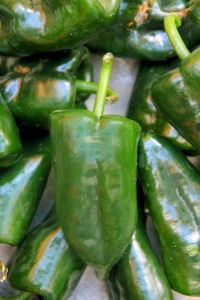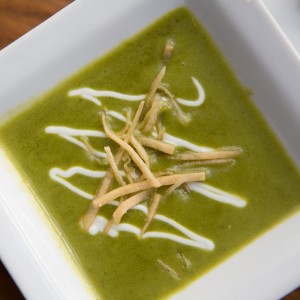The Beautiful Poblano
Written for Señor Ernesto Delgado
The Rich History of the Versatile Poblano
The Poblano Chile originated in Puebla, Mexico, a region in the heart of the country. It is said to have grown wild in the mountainous areas near Puebla – quite possibly in Cholula, which is thought to be the oldest continuously inhabited city in Mexico.

Cholula was first settled by indigenous people between 800 and 200 BC. By 100 BC, the Olmecs had made Cholula one of Mexico’s most active cities. During that period, a great pyramid was constructed at the center of the city. It was enormous – standing nearly 181 feet tall and over 1300 feet wide, it remains one of the largest pyramids in the world. Predating the Aztec civilization, the Olmecs are considered to be one of the earliest great civilizations in Mesoamerica.
It’s likely the wild Poblano Chiles played a large role in the cooking of early peoples. The Aztec diet is well cataloged, and perhaps not surprisingly was quite healthful. The Aztecs ate a varied diet, even domesticating turkeys and ducks. Depending on the region, they enjoyed such foods as amaranth, chia, nopal, sweet potato, jicama, guava, grasshoppers, cacao and even harvested vanilla from orchid pods. They grew maize, squash, and beans. Many types of chiles were harvested – both wild and cultivated – among them the Poblano remained one of the most popular because of its mild flavor. By the 17th century, they were so popular that a number of recipes were created just for the Poblano. Mole sauce was developed during that time using chocolate, cinnamon and nuts. The Spaniards brought chickens with them to the New World, and they were undoubtedly used in some of the first Mole dishes.

The Poblano’s wide use in central Mexico resulted in good health for its inhabitants also – just one Poblano pepper contains 95% of the recommended daily allowance of vitamin C.
Today, Poblano Chiles are grown in abundance in California’s Central Valley and favored by home gardeners for their versatility in many dishes. They are easily cultivated in most regions of California – as long as they have full sun and the soil temperature is at least 65 degrees.
Ernesto Delgado wanted to showcase the lovely, delicious and versatile Poblano at Mayahuel, not only because it lends itself to so many recipes, but it has historical significance in the Aztec diet. Our Crema de Poblano soup is one of our signature dishes –rumored to be quite addictive. The soup is creamy, slightly spicy, and has the distinct flavor of fresh roasted Poblanos and fresh Cilantro.
At Mayahuel, we celebrate the authentic cuisine of Mexico – those foods which were staples of the Olmec and Aztec diet and are now a part of everyday life in Mexico.

+ There are no comments
Add yours